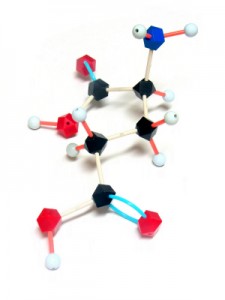Metabolic Changes in Brain of Bipolar at Autopsy
Highlights from the International Society for Bipolar Disorders Conference Posters and Presentations, Chicago, June 22-25, 2023
Graeme Preston reported on the brain of autopsied bipolar patients having increases aspartate and citrulline, while those with unipolar depression had decreases in the TCA cycle.
He saw increases in acetyl carnitine in manic bipolar patients versus bipolar depressed patients, which is of interest in relationship to the putative antidepressant effects of acetyl-L-carnitine in animal models of depression and in humans.
Chronic Fatigue Linked to Low Metabolism
A 2016 article in the journal PNAS suggests that people with chronic fatigue syndrome, also known as myalgic encephalopathy, share a low metabolic profile.
In the study, researcher Robert K. Naviaux and colleagues measured 612 different metabolites in 63 metabolic pathways. They found abnormalities in 20 of these pathways in people with chronic fatigue. Eighty percent of the abnormal measurements were low.
The low metabolic profile resembled a stage of development some worm larvae go through when environmental conditions are harsh. The phase, called dauer, can be brought on by harsh temperatures, low food supply, or pheromones that indicate high population density. It resembles hibernation in some ways, including changes to mitochondrial function. Dauer allows larvae to live for 4 months rather than their normal lifespan of 3 weeks. They can resume normal development when conditions improve.
The authors suggest that chronic fatigue is a metabolic response to environmental stress, and hope to clarify the link between mitochondrial function and the illness.
Inflammatory and Metabolic Abnormalities Predict Poor Response to Antidepressants
 There is mounting evidence that inflammation and metabolic problems are related to depression. A recent study by Vogelzangs et al. in the journal Neuropsychopharmacology examined 313 patients being treated for depression to see whether levels of inflammatory markers in the blood and metabolic factors such as cholesterol, blood pressure, and waist circumference predicted whether those patients would still (or again) be diagnosable with depression two years later.
There is mounting evidence that inflammation and metabolic problems are related to depression. A recent study by Vogelzangs et al. in the journal Neuropsychopharmacology examined 313 patients being treated for depression to see whether levels of inflammatory markers in the blood and metabolic factors such as cholesterol, blood pressure, and waist circumference predicted whether those patients would still (or again) be diagnosable with depression two years later.
Several factors predicted later depression, including high levels of the inflammatory marker interleukin-6, low HDL (“good”) cholesterol, higher than normal triglycerides, and high blood glucose (hyperglycemia).
People who had four or more types of inflammatory or metabolic abnormalities had almost twice the odds of having chronic depression. Among those study participants who had only recently begun taking antidepressant medication, having four or more of these risk factors made them almost 7 times more likely to be depressed during follow-up.
One explanation for the connection between inflammatory and metabolic dysregulation and depression is that inflammation and metabolic problems worsen and complicate a patient’s depression and reduce the patient’s responsiveness to traditional antidepressants. Alternative ways of treating these patients aimed at their inflammation and metabolism may be necessary.
How Inflammation Increases Glutamate Overexcitation And Neurotoxicity
Research has shown a link between inflammation and mental illness. Inflammation leads to a series of chemical changes that can overexcite neurons and interfere with the protection of neurons.
Inflammation increases the production of indoleamine-pyrrole 2,3-dioxygenase (IDO), an enzyme that breaks down the amino acid tryptophan into kynurenic acid and quinolinic acid. They in turn increase glutamate, the main excitatory neurotransmitter, and decrease brain-derived neurotrophic factor (BDNF), which keeps neurons healthy.
Kynurenic acid stimulates microglia, which clean up the central nervous system as a form of immune defense, to produce inflammatory cytokine proteins.
Quinolinic acid directly stimulates glutamate receptors and encourages glutamate release from astrocytes. Quinolinic acid also blocks glutamate removal that would normally occur through reuptake into the astrocytes, leading to more stimulation of extrasynaptic glutamate receptors and decreases in BDNF.
Quinolinic acid’s effects are opposite to those of the antidepressant ketamine, which blocks glutamate NMDA receptors and increases BDNF. When people are given interferon protein for the treatment of cancers, quinolinic acid increases in cerebrospinal fluid, inducing depression. The severity of depression induced is correlated with the patient’s levels of quinolinic acid.
It appears that ketamine has indirect anti-inflammatory effects through its ability to block glutamate receptors and increase BDNF.



